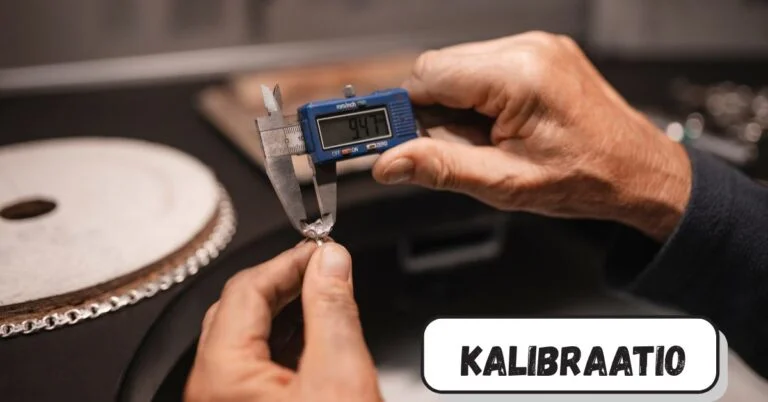Kalibraatio, or calibration, is a term that resonates in various industries. It ensures that measurements are accurate and reliable. In an age where precision is paramount—from manufacturing to healthcare—understanding the significance of kalibraatio cannot be overstated.
Imagine a world where your measuring instruments yield inaccurate results. A slight miscalculation could lead to faulty products or compromised safety standards. That’s where calibration comes into play. It’s not just a technical requirement; it’s the bedrock of quality assurance.
Whether you’re operating heavy machinery, conducting laboratory experiments, or managing complex processes in manufacturing, the role of calibration is crucial for achieving excellence. Let’s dive deeper into this essential practice and explore its impact on precision measurement across different sectors.
The Role of Calibration in Precision Measurement
Calibration plays a crucial role in precision measurement. It ensures that instruments produce accurate and consistent results, which is essential for various industries.
Without proper calibration, measurements can drift over time. This can lead to faulty data that affects product quality and safety. For example, in the pharmaceutical industry, precise measurements are vital for drug formulation. Any deviation could have severe consequences.
Moreover, calibration helps maintain compliance with industry standards. Regulatory bodies often require regular checks to ensure equipment meets specific criteria. This not only safeguards against errors but also builds trust with clients and stakeholders.
Additionally, calibrated tools enhance operational efficiency. When devices deliver reliable readings, teams can make informed decisions quickly. This ultimately reduces waste and optimizes processes across different sectors.
Investing in calibration practices is an investment in quality assurance and operational integrity throughout any organization or project relying on accurate measurement.
Types of Calibration Methods
Calibration methods vary widely, each tailored to specific instruments and applications. One common type is **laboratory calibration**, where equipment is compared against a standard reference in controlled conditions. This method ensures high accuracy.
**Field calibration** offers another approach. It involves adjusting instruments on-site, often used for systems like sensors or gauges that require immediate verification under operating conditions.
Another notable method is **dynamic calibration**, which assesses an instrument’s performance while it operates. This technique is crucial for devices subject to varying loads or speeds, providing insights into real-time functionality.
Lastly, **comparison calibration** relies on using certified standards to validate measurement results of the device being tested. This method establishes confidence in the readings by demonstrating consistency with known values across different settings. Each of these methods plays a vital role in ensuring precision and reliability across various industries.
Best Practices for Ensuring Accurate Calibration
To achieve accurate calibration, start with a clear understanding of the measurement instrument’s specifications. Know its limitations and capabilities.
Regularly schedule calibration intervals based on usage frequency. This ensures that instruments remain within their tolerance limits over time.
Maintain a controlled environment for calibrating equipment. Factors like temperature and humidity can skew results significantly.
Utilize certified reference standards whenever possible. These established benchmarks help validate your measurements against industry norms.
Documentation is key. Keeping detailed records of each calibration process helps track performance trends and identifies any recurring issues.
Involve trained personnel in the calibration process. Their expertise can prevent common pitfalls and enhance accuracy throughout the procedure.
Common Challenges and Solutions in the Calibration Process
Calibration can be a complex process, and several challenges often arise. One common issue is equipment variability. Instruments may drift over time due to wear or environmental changes, leading to inaccurate readings.
Another challenge is the lack of standardized procedures. Without clear guidelines, different operators may calibrate instruments inconsistently, resulting in discrepancies that affect results.
Budget constraints can also hinder effective calibration efforts. Organizations might delay maintenance or updates on critical calibration tools due to financial limitations.
To address these issues, implementing a robust quality management system can help standardize processes across teams. Regular training for technicians ensures everyone follows best practices consistently.
Investing in reliable equipment minimizes variability and improves accuracy over time. Building a culture that prioritizes precision measurement further enhances the overall effectiveness of calibration initiatives within an organization.
Benefits of Regular Calibration
Regular calibration brings numerous advantages to various industries. It enhances the reliability of measurement tools, ensuring consistent performance over time. With accurate readings, businesses can make informed decisions based on precise data.
Another significant benefit is improved product quality. When instruments are calibrated regularly, they reduce errors that could lead to defects in manufacturing processes. This ultimately boosts customer satisfaction and trust.
Cost savings also arise from regular calibration practices. By identifying issues early on, companies can prevent costly downtime and maintain operational efficiency.
Moreover, compliance with industry standards often requires routine calibration checks. Adhering to these guidelines not only supports safety but also fosters a culture of excellence within organizations.
Regular calibration extends the lifespan of equipment by minimizing wear and tear through optimized usage conditions. Investing in this process translates into long-term benefits for any organization committed to precision and quality assurance.
Conclusion: The Impact of Calibration on Precision Measurement and Quality Assurance
Calibration, or kalibraatio as it’s known in Finnish, plays a vital role in ensuring precision measurement across various industries. When instruments and equipment are calibrated correctly, the accuracy of their readings improves significantly. This directly impacts product quality and compliance with industry standards.
Regular calibration not only helps maintain consistency but also builds trust with customers. It ensures that measurements align closely with established benchmarks. Businesses that prioritize effective calibration processes often see fewer errors and enhanced operational efficiency.
Moreover, keeping up with routine calibration can minimize costly downtimes caused by equipment failures or inaccuracies. Investing time and resources into a comprehensive calibration strategy is essential for organizations aiming to uphold high-quality assurance standards.
Understanding the significance of kalibraatio fosters an environment where precision thrives. Embracing robust calibration practices leads to better products, satisfied customers, and a stronger reputation within any market sector.






